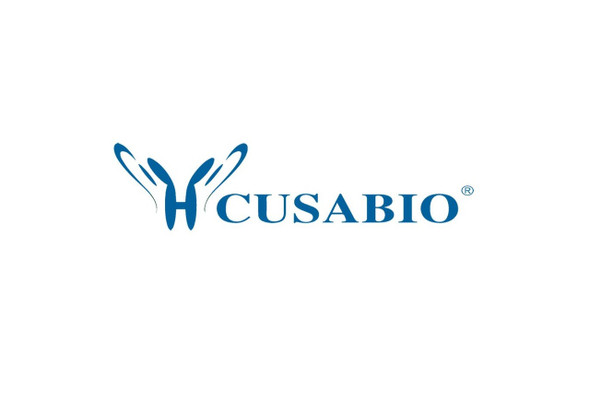Cusabio Human Recombinants
Recombinant Human Fibroblast growth factor receptor 1 (FGFR1), partial | CSB-YP008642HUa4
- SKU:
- CSB-YP008642HUa4
- Availability:
- 25 - 35 Working Days
Description
Recombinant Human Fibroblast growth factor receptor 1 (FGFR1), partial | CSB-YP008642HUa4 | Cusabio
Alternative Name(s): Basic fibroblast growth factor receptor 1 Short name: BFGFR Short name: bFGF-R-1 Fms-like tyrosine kinase 2 Short name: FLT-2 N-sam Proto-oncogene c-Fgr CD_antigen: CD331 BFGFR, CEK, FGFBR, FLG, FLT2, HBGFR
Gene Names: FGFR1
Research Areas: Cancer
Organism: Homo sapiens (Human)
AA Sequence: RPSPTLPEQAQPWGAPVEVESFLVHPGDLLQLRCRLRDDVQSINWLRDGVQLAESNRTRITGEEVEVQDSVPADSGLYACVTSSPSGSDTTYFSVNVSDALPSSEDDDDDDDSSSEEKETDNTKPNRMPVAPYWTSPEKMEKKLHAVPAAKTVKFKCPSSGTPNPTLRWLKNGKEFKPDHRIGGYKVRYATWSIIMDSVVPSDKGNYTCIVENEYGSINHTYQLDVVERSPHRPILQAGLPANKTVALGSNVEFMCKVYSDPQPHIQWLKHIEVNGSKIGPDNLPYVQILKTAGVNTTDKEMEVLHLRNVSFEDAGEYTCLAGNSIGLSHHSAWLTVLEALEERPAVMTSPLYLE
Source: Yeast
Tag Info: N-terminal 6xHis-sumostar-tagged
Expression Region: 22-376aa
Sequence Info: Partial
MW: 55.4 kDa
Purity: Greater than 85% as determined by SDS-PAGE.
Relevance: Tyrosine-protein kinase that acts as cell-surface receptor for fibroblast growth factors and plays an essential role in the regulation of embryonic development, cell proliferation, differentiation and migration. Required for normal mesoderm patterning and correct axial organization during embryonic development, normal skeletogenesis and normal development of the gonadotropin-releasing hormone (GnRH) neuronal system. Phosphorylates PLCG1, FRS2, GAB1 and SHB. Ligand binding leads to the activation of several signaling cascades. Activation of PLCG1 leads to the production of the cellular signaling molecules diacylglycerol and inositol 1,4,5-trisphosphate. Phosphorylation of FRS2 triggers recruitment of GRB2, GAB1, PIK3R1 and SOS1, and mediates activation of RAS, MAPK1/ERK2, MAPK3/ERK1 and the MAP kinase signaling pathway, as well as of the AKT1 signaling pathway. Promotes phosphorylation of SHC1, STAT1 and PTPN11/SHP2. In the nucleus, enhances RPS6KA1 and CREB1 activity and contributes to the regulation of transcription. FGFR1 signaling is down-regulated by IL17RD/SEF, and by FGFR1 ubiquitination, internalization and degradation.
Reference: "Alternative splicing generates at least five different isoforms of the human basic-FGF receptor." Eisemann A., Ahn J.A., Graziani G., Tronick S.R., Ron D. Oncogene 6:1195-1202(1991)
Storage: The shelf life is related to many factors, storage state, buffer ingredients, storage temperature and the stability of the protein itself. Generally, the shelf life of liquid form is 6 months at -20?/-80?. The shelf life of lyophilized form is 12 months at -20?/-80?.
Notes: Repeated freezing and thawing is not recommended. Store working aliquots at 4? for up to one week.
Function: Tyrosine-protein kinase that acts as cell-surface receptor for fibroblast growth factors and plays an essential role in the regulation of embryonic development, cell proliferation, differentiation and migration. Required for normal mesoderm patterning and correct axial organization during embryonic development, normal skeletogenesis and normal development of the gonadotropin-releasing hormone (GnRH) neuronal system. Phosphorylates PLCG1, FRS2, GAB1 and SHB. Ligand binding leads to the activation of several signaling cascades. Activation of PLCG1 leads to the production of the cellular signaling molecules diacylglycerol and inositol 1,4,5-trisphosphate. Phosphorylation of FRS2 triggers recruitment of GRB2, GAB1, PIK3R1 and SOS1, and mediates activation of RAS, MAPK1/ERK2, MAPK3/ERK1 and the MAP kinase signaling pathway, as well as of the AKT1 signaling pathway. Promotes phosphorylation of SHC1, STAT1 and PTPN11/SHP2. In the nucleus, enhances RPS6KA1 and CREB1 activity and contributes to the regulation of transcription. FGFR1 signaling is down-regulated by IL17RD/SEF, and by FGFR1 ubiquitination, internalization and degradation.
Involvement in disease: Pfeiffer syndrome (PS); Hypogonadotropic hypogonadism 2 with or without anosmia (HH2); Osteoglophonic dysplasia (OGD); Hartsfield syndrome (HRTFDS); Trigonocephaly 1 (TRIGNO1); Encephalocraniocutaneous lipomatosis (ECCL); Jackson-Weiss syndrome (JWS)
Subcellular Location: Cell membrane, Single-pass type I membrane protein, Nucleus, Cytoplasm, cytosol, Cytoplasmic vesicle
Protein Families: Protein kinase superfamily, Tyr protein kinase family, Fibroblast growth factor receptor subfamily
Tissue Specificity: Detected in astrocytoma, neuroblastoma and adrenal cortex cell lines. Some isoforms are detected in foreskin fibroblast cell lines, however isoform 17, isoform 18 and isoform 19 are not detected in these cells.
Paythway: MAPKsignalingpathway
Form: Liquid or Lyophilized powder
Buffer: If the delivery form is liquid, the default storage buffer is Tris/PBS-based buffer, 5%-50% glycerol. If the delivery form is lyophilized powder, the buffer before lyophilization is Tris/PBS-based buffer, 6% Trehalose, pH 8.0.
Reconstitution: We recommend that this vial be briefly centrifuged prior to opening to bring the contents to the bottom. Please reconstitute protein in deionized sterile water to a concentration of 0.1-1.0 mg/mL.We recommend to add 5-50% of glycerol (final concentration) and aliquot for long-term storage at -20?/-80?. Our default final concentration of glycerol is 50%. Customers could use it as reference.
Uniprot ID: P11362
HGNC Database Link: HGNC
UniGene Database Link: UniGene
KEGG Database Link: KEGG
STRING Database Link: STRING
OMIM Database Link: OMIM









